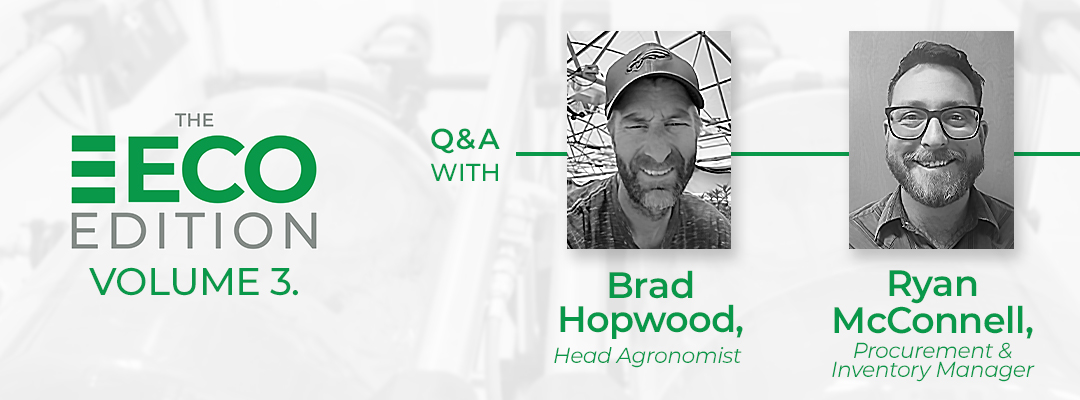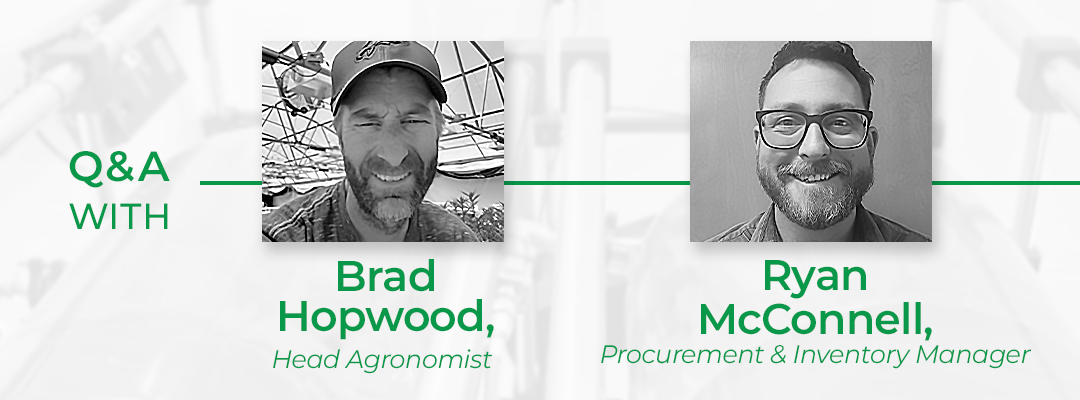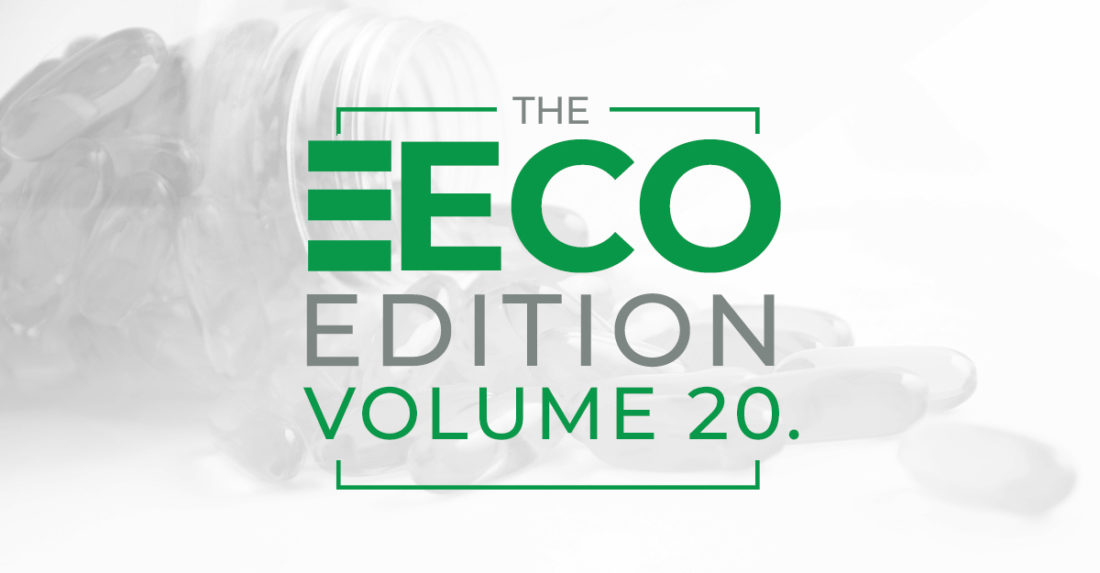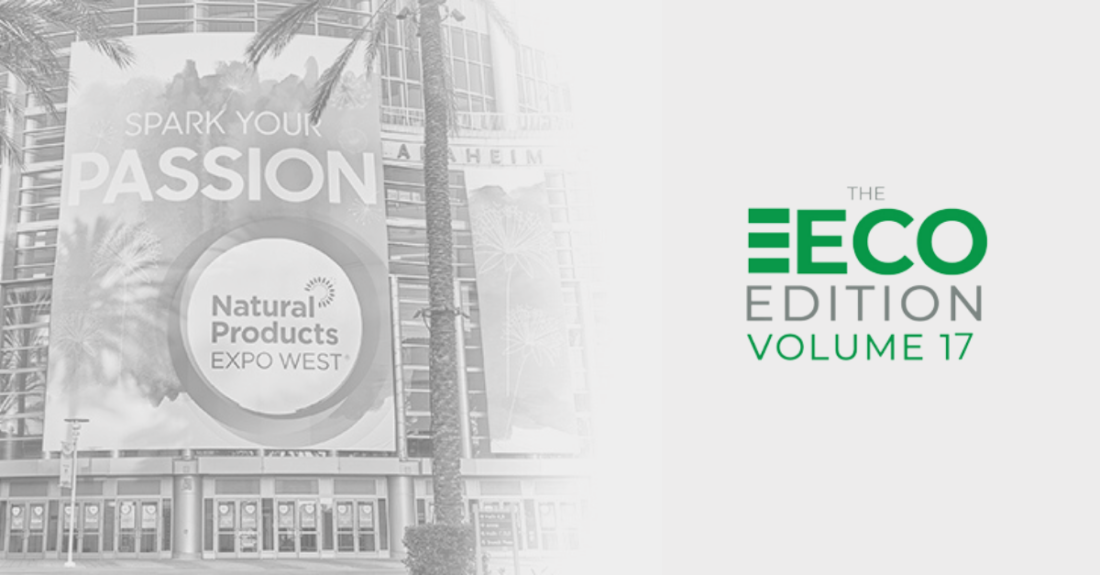
A Q&A Panel Discussion on CBD Seeds and Germination with Our In-House Experts
We sat down with two of our in-house experts, Ryan McConnell, Procurement and Inventory Manager, and Brad Hopwood, Head Agronomist, to discuss the inner workings of CBD seeds and germination.
First things first, what is the difference between CBD Seed to Soil and CBD Seed Start?
RM: Seed to soil uses an untouched seed and puts it directly into the ground. With this method, you need more seed because you can expect a percentage of your crop to not grow. Seed to soil is not for everyone, however, as it requires a lot of water. Flood and overhead pivot irrigation are necessary.
BH: Seed to soil is certainly a risk due to higher die off. However, I am personally a fan of seed to soil, because the taproot goes down much further, usually 3-4ft. Seed to start can only go as deep as the pot it started in.
RM: I, on the other hand, am personally a fan of seed to start because it has a lower die off yield. You can ensure every hole you dig has a germinated CBD seed in it. Plus, you can use drip irrigation, which is great for a farm with limited water supply.
What is a feminized seed?
BH: A feminized CBD seed is one that is crossed with itself or with another female. Basically, it is female to female pollination – no males included. Generally speaking, you do not want any male plants.
What would happen if you plant a male near a female?
BH: Pollen can travel up to 10 miles, so when a male CBD seed grows and germinates, this pollen can seed the crop and turn your CBD flower into seeds with lowering your CBD content.
RM: If you are not growing fiber, or using male CBD seeds strictly for research purposes, you shouldn’t be doing this.
Once you have your feminized seeds, how do you like to space the plants?
RM: I plant three to five feet apart, in two rows for seed starts. This ensures I have enough coverage – about 3,000 to 5,000 per acre. For seed to soil, you can go up to 10,000 per acre – it just depends on the environment.
BH: For autoflowering, I stagger the plants between two rows and space them every 18-24 inches. This spacing usually takes 90 days to grow and allows for about 4,000 seeds per acre. With photoperiod flowers, I like 5’ x 5’ or 2,000 per acre.
RM: Ideally you want to be planting 3,000 to 10,000 seeds per acre. A farm makes its money on these decisions, so it is vital to have a plan.
How do you ensure consistency in your grow
BH: Keep good notes, have a plan, test for pests, test your water and understand the fertilizer you need. Do a full panel test of soil for metals, etc. so you don’t find out too late you have issues.
RM: It also never hurts to consult with the experts. There are no quick tips and tricks to the perfect CBD seed and plant. It is all about the resources you have.
What is the average CBD seed germination rate?
RM: When you hand your CBD seeds off to complete a germination test, you want to aim for 90-95% germination.
BH: A good example of this is our Cherry Blossom CBD seed. It has a 99% feminization with 99% germination scores, which means you have a very good seed.
What are the best CBD strains for certain climates?
BH: If you have a tempered climate, like California, you can grow any strain. However, sativa likes drought tolerant climates. The hotter climates are perfect for the tall, grassy plant.
RM: Indica strains on the other hand are the best choice for cooler climates with higher elevation.
BH: It is important to go beyond the flavor you want, though. Think more about where you are and what will grow best in your area. Research your climate, then choose what strains of CBD seed and CBD genetics grow best there.
How do you ensure your CBD seeds have a robust terpene profile?
BH: To be frank, this is something the industry is still working on. However, there are ways to ensure you’re getting the best. Buy your CBD seeds from a reliable distributor and obtain the terpene profile as well as the COA.
RM: It is also important to manage the timing of planting, fertilizing, and harvest. This will ensure quality and the terpene profile can stay intact.
When it comes to harvesting CBD seeds, what is the best course of action?
RM: Plan, plan, plan. Have your plan in place before you even put a single CBD seed in the ground. Know your goal, what you will grow and how big your farm is. Only plan to hand-harvest on small farms. Not having a plan in place can put you in a really bad spot come harvest.
Rules and regulations around the CBD industry are always changing – how do you stay up to date with the latest news?
BH: Staying in touch with your state legislators is vital, and above all, keep records of your compliance.






